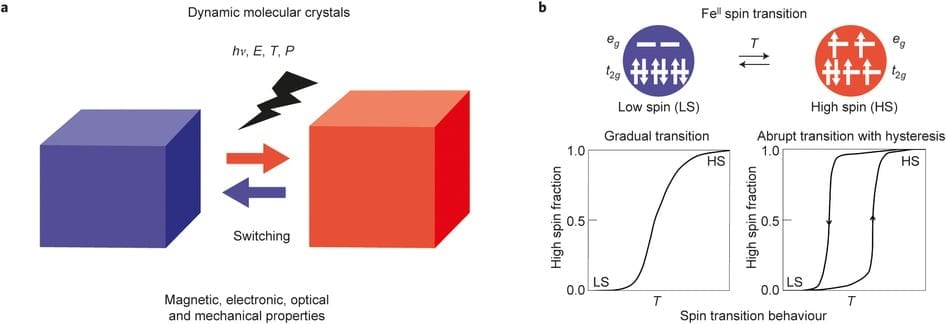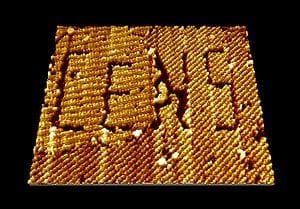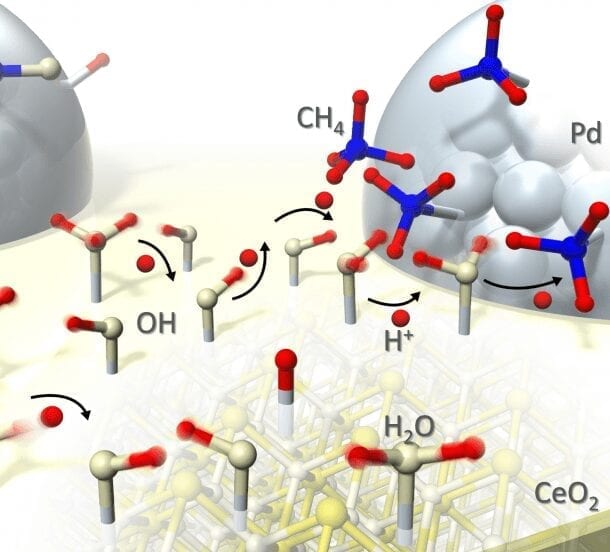
New technology could revolutionise printed electronics by enabling high quality semiconducting molecular crystals to be directly spray-deposited on any surface.
University of Surrey and National Physical Laboratory’s research allows to convert organic semiconducting inks into isolated crystals through a scalable process, suitable for a wide range of molecules.
The research has a direct impact on printed electronic applications for flexible circuits, advanced photodetector arrays, chemical and biological sensors, robotic skin tensile sensors, x-ray medical detectors, light emitting transistors and diodes, and miniature lasers.
Has the time come to replace traditionally used silicon with printable organic semiconductor inks? University of Surrey scientists believe so, especially for future electronics that need to be flexible, lightweight, wearable and low-cost.
Single crystal semiconductors, such as silicon, have been at the forefront of scientific interest for more than 70 years, serving as the backbone of electronic devices. Inorganic single crystals are typically grown from a melt at very high temperatures, in special chambers filled with inert gas, using time-consuming and energy intensive processes. A new class of crystalline materials, called organic semiconductors, can also be grown as single crystals, but in a very different way, using solution-based methods at room temperature in air, opening up the possibility of large-scale production of inexpensive electronics, targeting numerous applications ranging from field effect transistors and light emitting diodes to medical x-ray detectors and miniature lasers.
New research, published today in Nature Communications, conducted by a team of researchers from the University of Surrey and National Physical Laboratory, demonstrates for the first time a low-cost, scalable spray-printing process to fabricate high-quality isolated organic single crystals. The method is suitable for a wide variety of semiconducting small molecules, which can be dissolved in solvents to make semiconducting inks, and then be deposited on virtually any substrate. The key aspect is in combining the advantages of antisolvent crystallization and solution shearing. The crystals’ size, shape and orientation are then controlled by the spay angle and distance to the substrate, which govern the spray droplets’ impact onto the antisolvent’s surface. These crystals are high quality structures, as confirmed by a combination of characterisation techniques, including polarised optical and scanning electron microscopy, x-ray diffraction, polarised Raman spectroscopy and field-effect transistor tests.
“This method is a powerful, new approach for manufacturing organic semiconductor single crystals and controlling their shape and dimensions,” said Dr Maxim Shkunov from the Advanced Technology Institute at the University of Surrey.
“If we look at silicon, it takes almost 15000C to grow semiconductor grade crystals, while steel spoons will melt at this temperature, and it will fetch a very hefty electric bill for just 1 kg of silicon, same as for running a tea kettle for over 2 days non–stop. And then, you would need to cut and polish those silicon ‘boules’ into wafers.
“We can make single crystals in a much simpler way, entirely at room temperature with a £5 artist spray brush. With a new class of organic semiconductors based on carbon atoms, we can spray-coat organic inks onto anything, and get more or less the right size of crystals for our devices right away.”
Dr Maxim Shkunov, lead author of the research, continued: “The trick is to cover the surface with a non-solvent so that semiconductor molecules float on top and self-assemble into highly ordered crystals. We can also beat silicon by using light emitting molecules to make lasers, for example, – something you can’t do with traditional silicon. This molecular crystals growth method opens amazing capabilities for printable organic electronics.”
Learn more: Spray printed crystals to move forward organic electronic applications
The Latest on: Printable organic electronics
[google_news title=”” keyword=”printable organic electronics” num_posts=”10″ blurb_length=”0″ show_thumb=”left”]
via Google News
The Latest on: Printable organic electronics
- Solar Energy Newson April 30, 2024 at 5:00 pm
Apr. 8, 2024 — Researchers have fabricated a new four-terminal organic solar cell with a tandem configuration with a 16.94% power conversion efficiency (PCE). The new device is composed by a ...
- Organic electrochemical transistors: Scientists solve chemical mystery at the interface of biology and technologyon April 30, 2024 at 11:22 am
Researchers who want to bridge the divide between biology and technology spend a lot of time thinking about translating between the two different "languages" of those realms.
- Unravelling Secrets Of Efficient Organic Photovoltaicson April 25, 2024 at 10:18 pm
Discover how investigating the electron-accepting molecule Y6 is revolutionising organic photovoltaics, offering new hope for sustainable energy solutions.
- Best Budget 3D Printer of 2024on April 25, 2024 at 10:59 am
traditional paper printers Credentials 6 years working professionally in the 3D printing space / 4 years testing consumer electronics for large websites. CNET’s expert staff reviews and rates ...
- During Frieze Week, Artists Examine the Effects of Technologyon April 25, 2024 at 3:02 am
From mining materials for electronics to a connection to colonialism ... and glass shaped like half-formed heads. By attaching nozzles to organic materials, some seemingly caught mid-transformation, ...
- Organic Chemistry Newson April 24, 2024 at 5:00 pm
A team has discovered that a certain type of chemical reaction can explain why organic matter found in ... Apr. 23, 2024 — Researchers describe the steps they took to manipulate DNA and proteins ...
- Development of organic semiconductors featuring ultrafast electronson April 18, 2024 at 5:00 pm
Professor Kimoon Kim from POSTECH expressed the significance of the research by saying, "We've achieved a breakthrough in addressing the low electron mobility, a major challenge in organic ...
- Organic Field-Effect Transistors: The Future of Flexible Electronicson April 18, 2024 at 7:44 am
Unlike conventional transistors that rely on inorganic semiconductors like silicon, OFETs leverage the unique properties of organic materials to enable novel applications in flexible, printable, and ...
- How to shop more sustainably on Amazonon April 16, 2024 at 9:13 am
There's the Amazon Aware store that sells various household and lifestyle products that have been certified by third parties for their use of organic, recycled ... Amazon will print that little green ...
via Bing News










